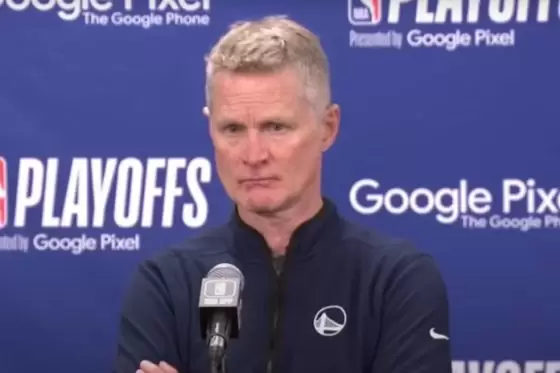At its inception, the G League, then called the NBA Developmental League (D League), was precisely what the name describes. It was a place for young players not ready to compete on the NBA stage to work on their craft and attempt to push their careers forward.
Pascal Siakam, Khris Middleton, Danny Green, and Aaron Brooks are some of the top success stories to come out of the D League, but at the time, they were the exception, not the rule. Siakam made his way up the ranks in Toronto’s system, but for the most part, D League players would enter the draft or sneak their way onto rosters regardless of their affiliated team.
When Gatorade sponsored the league in the 2017-18 season, it signaled more than a name change. Teams began treating their G League squads more like the minor leagues in baseball. It’s not there yet, but the league is trending toward becoming a farm system.
The Boston Celtics have started making this shift. Sam Hauser and Luke Kornet, both of whom played significant roles for the Celtics last year, came up through the G League. But Boston’s philosophical shift concerning the G League is beginning to take another step.
Photo by Issac Baldizon/NBAE via Getty Images
While the turn toward treating the G League like a farm system is seemingly sweeping the NBA across the board, different teams take different approaches to filling their affiliates up with talent.
In some cases, big swings are the goal. Adding young, raw prospects in hopes of developing them into star-level talent. Again, Siakam and Middleton are the perfect examples, with Rudy Gobert and Fred VanVleet also falling into that category.
However, Brad Stevens and the Celtics are starting to take a different approach, one that has worked wonders for other teams around the NBA. Instead of focusing on the high-ceiling, low-floor prospects, Boston is ostensibly looking to turn the Maine Celtics into a role-player factory.
Rather than bringing in raw prospects, Stevens has targeted players who have at least one NBA-level skill mastered in hopes of helping them develop the rest of their games.
The Miami Heat are the perfect model. Max Strus, Duncan Robinson, and Gabe Vincent were all project players whom Miami developed into elite role players, and all have gone on to earn massive NBA contracts.
Hauser’s elite three-point shooting earned him a spot in Boston’s regular-season lineup last year. Kornet’s interior presence was enough to secure consistent playing time at the end of the rotation. And Boston’s most recent camp invites have continued this new precedent.
Per Keith Smith of Spotrac, the Celtics just recently signed and waived Brandon Slater, Jordan Schakel, and Taylor Funk, and though it has not been made official, past reports indicated their plan to do the same with DJ Steward. In doing so, the Celtics will aim to re-route them to their G League squad as affiliate players.
All four follow the same mold as Hauser and Kornet, and the same can be said about Neemias Queta, Boston’s newest two-way player.
:no_upscale()/cdn.vox-cdn.com/uploads/chorus_asset/file/24963925/1506156138.jpg)
Photo by Rocky Widner/NBAE via Getty Images
Slater has all the physical tools to play in the NBA. Listed everywhere from 6-foot-6 to 6-foot-8, he weighs in at roughly 220 lbs., and that’s almost all muscle.
Schakel is an absolute sniper from distance. At 6-foot-6, he shot 46.1% from distance on 6.4 attempts per game during his senior season at San Diego State in 2020-21. And this past year in the G League, he shot 39.9% from deep on 5.2 attempts per game in 33 appearances.
Funk is Danny Ainge’s dream – shooting with size (and from Utah). The former Utah State Aggie stands at 6-foot-8 and shot 37.0% from deep on 6.4 attempts in his final collegiate season last year. And while he may be a bit skinny, his length should also translate well to the NBA level.
Steward has spent the past two seasons playing for the Stockton Kings, the Sacramento Kings’ G League team. He showed flashes of serious scoring potential this Summer League and some solid ball-handling abilities. And like Schakel and Funk, he’s a great three-point shooter. He shot 40.9% from deep in the G League last season.
Queta is a giant body and was heralded as the best interior defender on the Kings roster last year. His rebounding and size inside helped lead him to runner-up in the G League MVP race, and he averaged 1.9 blocks per game.
Every single project player the Celtics have brought in is exceptional in one area. Whether that be shooting, athleticism, shot-blocking, or otherwise, they have at least one skill that would immediately translate to the NBA level. But they aren’t without their flaws. If they were, they’d be playing in the league right now.
Slater isn’t a consistent shooter. Schakel and Funk aren’t the best defenders. Steward is undersized at 6-foot-1. Queta needs to work on his foot speed and overall quickness.
:no_upscale()/cdn.vox-cdn.com/uploads/chorus_asset/file/24963930/1245759052.jpg)
Photo by David Becker/NBAE via Getty Images
None of the players Stevens signed to these types of contracts this summer will turn into a star, but they have a chance to play a role. With Jayson Tatum, Jaylen Brown, and now Kristaps Porzingis leading the way for the Celtics, Boston’s salary bill is going to climb. Finding and developing cheap role players will be the best way to fill out the roster around the edges.
The Celtics will always need three-point shooters. They will always need athletes who can match up with NBA-caliber bodies. They will always need extra ball handlers. They will always need high-level defenders down low. They won’t always have the money to sign these players.
By turning the Maine Celtics into a farm system for role players, Stevens will attempt to keep a steady flow of production coming off Boston’s bench, and his latest wave of signings follows that exact mindset to a tee.





